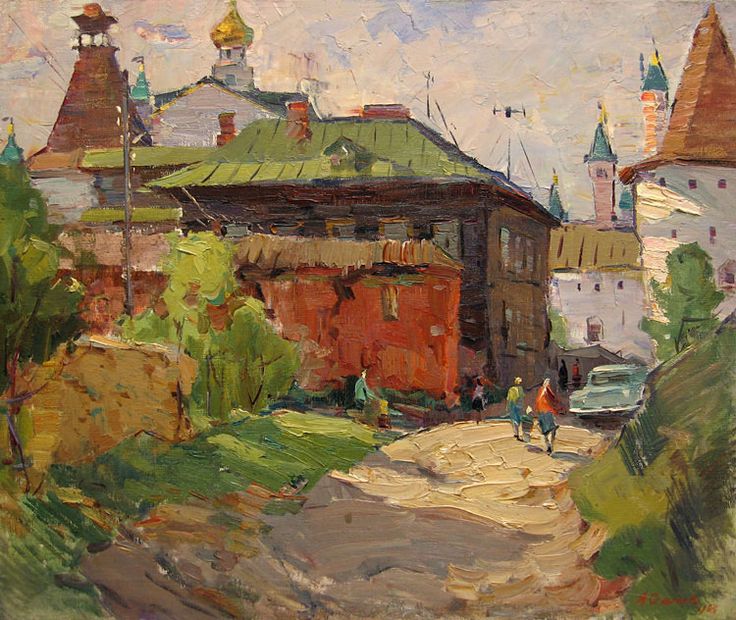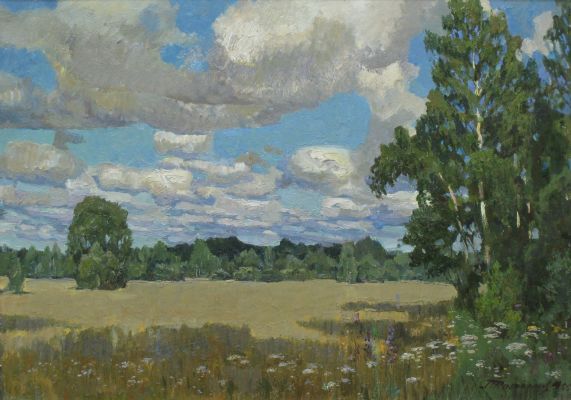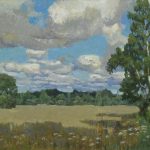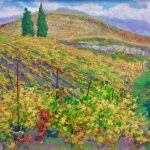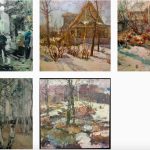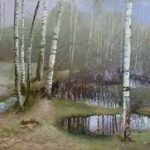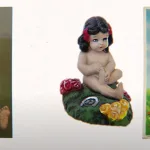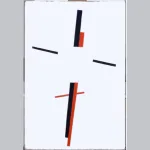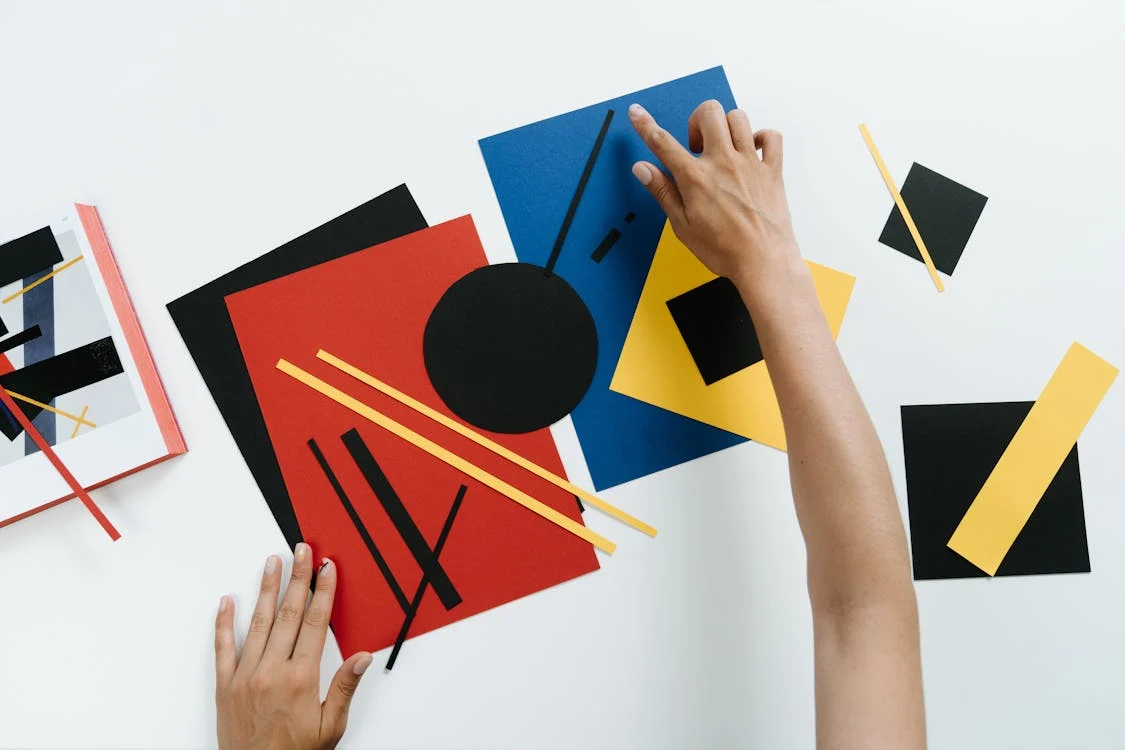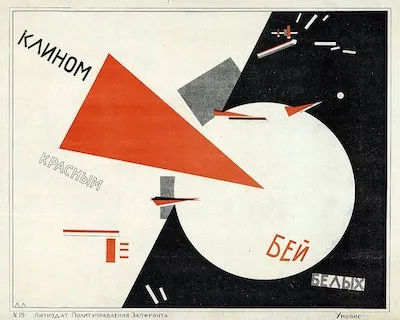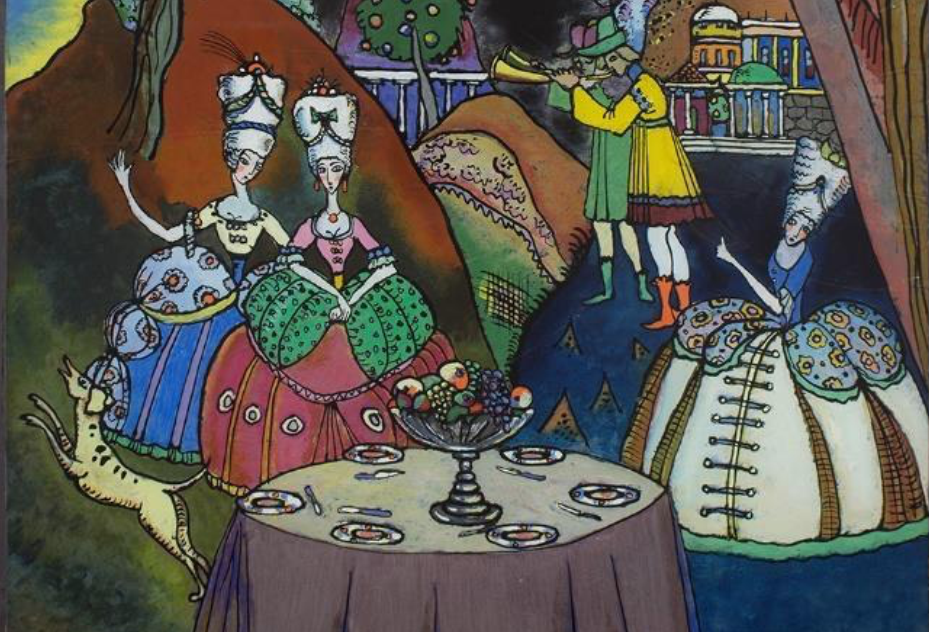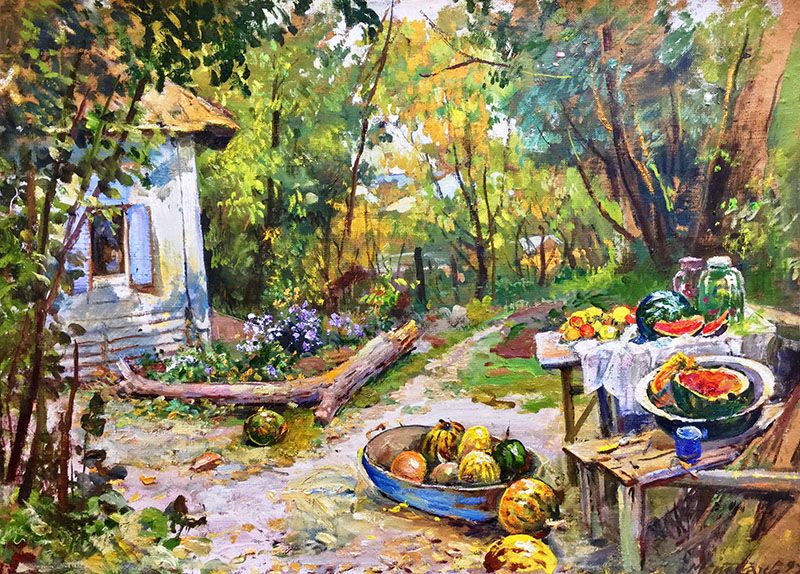
Tkachev, Mikhail Evdokimovich
Mikhail Evdokimovich Tkachev
was born in 1912 in a small town, Kalach, situated deep inside Russia. Ninety years ago Kalach was not even a town – just a beautiful Cossack village on the black soil not far from Voronezh.
In spring the town is pink and white with blooming orchards. In summer it looks white as it is so hot at noon that you can hardly see other colors.
There is a white-painted hut with blue shutters in Kalach. During the years of the revolution the house accommodated the staff of Budionny, who was one of the main heroes of the Civil War. In this house M. Tkachev spent his childhood and youth. Later it became the place to which he would return again and again, mainly in summer, to work outside in the fresh air.
After the Civil War the south of Russia was in ruins. Once at the market in Armavir, Tkachev met a young boy selling pictures painted on pieces of veneer. For 17-year-old Tkachev, it was a crucial meeting. He asked the boy to show him how he painted his pictures. The boy gave Tkachev some advice and mentioned a painting school in Armavir. The very next day Tkachev started his creative work himself and in 1930 entered the painting school. It was the beginning of his artistic career, as Tkachev himself recalls.
The young man studied so well that it took him only two years instead of four to finish the course. His art teachers V. I. Durnovo gave him recommendations.
Tkachev went to Leningrad, now St. Petersburg, where he entered the work faculty or preparatory courses for workers, countrymen and other people without the required education. Then being recruited into the army the young artist twice a week visited the art studio in the Kirov Community Hall. In Leningrad, Tkachev’s instructors were the famous soviet masters I. I. Brodsky, M. I. Avilov, and P. S. Naumov. Tkachev says: “It was due to their instruction that I was formed as an artist, having carried through all my life traditions of Russian realistic school.”
In 1937 the painter, then 25 years old, started work as a copyist in the State Russian Museum. For two years he worked there, looking into the works by Russian masters, and copying their technique. He considered it a great blessing.
In 1939 Tkachev went as a soldier to the Russian-Finnish War. Then followed a short break. From June of 1941 until May of 1945 Tkachev again participated in war; this time it was World War II. On the 20th of February, 1946, he left the army and resumed his work at the museum.
Tkachev took part in the closed competition for the best lanscape and became the second prize winner. The first prize, actually, was not being awarded. In 1952 Tkachev became a member of the Artist Union. For a mature man who had personally seen two world wars, painting landscape was his way to meditate on life and time. In his landscapes the artist Tkachev could express his appreciation for another day of life in his native land.
Tkachev depicts not a “picture perfect” land, but land the way it really is: uncombed and a bit wild, breathing with spring, then blooming, withering by the scorching sun, solemnly fading away into the wintry reserve.
If the man of 25-27 years wanted to answer the question ‘What is the truth?’ in art, the postwar artist was eager to reflect in his paintings the truth of today’s life. While working in the plein air Tkachev did not spend much time looking for a better view. “Today nature is like this…Nature is always different…It is not interesting when everything is as it should be.”
Since the middle of the 1950’s, Tkachev’s artworks had already become so virtuosic and complete, that, obviously, he was not a student anymore, but a master. If Tkachev’s landscapes done in 1952 were very detailed, his later works from 1955 to 1959 have wider brush strokes, more graceful lines and more complicated settings. Colors became brighter, more expressive, giving his works much light.
War years deeply influenced Tkachev’s painting. But the war theme comes through his works indirectly, as the background of today’s thoughts (Trenches Are Being Overgrown”, 1957). Only when the pain was dulled a little bit, did Tkachev begin to paint battle pieces. On his latter landscapes Tkachev not only depicts the state of nature at a certain moment, but adds some plot, the author’s narration. This additional setting he also uses in his portraits.
In different years Tkachev was painting his mother. He made an excellent detailed portrait of her in 1966. Then followed the series of her portraits, so that now one can easily recognize her wise and kind face. The last portrait, “Mother’s Joy” was finished in 1976, the year she died.
Tkachev’s portraits can be divided into two groups. One contains portraits in which most attention is given to the psychological details of a person being painted. These are gala portraits. The other group is more numerous. To this group belong portrait paintings by which the artist was trying to reflect personality, posture, and gesture. The best searches in this area can be seen in numerous portraits of the people close to the artist – his sister Natasha, mother, father, wife Margarita and daughter Natasha.
Tkachev’s motto was ‘no day without a drawing.’ Following this principle Tkachev became a master in drawing. He has created many good graphic portraits and scenes.
Tkachev has also tried himself in water-color painting. His water-colors are very quick and dynamic. The artist’s theory is that a water-color should be done within 10-15 minutes. Such requirements were typical for water-color painting schools in the Far East.
A very special place among the Tkachev’s works belong to still life. His still lifes are very detailed, colorful and bright. It is very imnportant for the artist to show all the shadows, the very moment when the sun ray appears, the nature of the material and combination of lines.
Tkachev’s contribution to the Russian art of the second half of the 20th Century is very considerable. But that was not the end of his artistic career. Tkachev continued to paint his wonderful pictures well into the 21st Century.
We have a very large group of Tkachev paintings.
Explore artist stories, Russian avant-garde movements, and practical tips for navigating the fine art market—insightful reads for collectors and connoisseurs.
